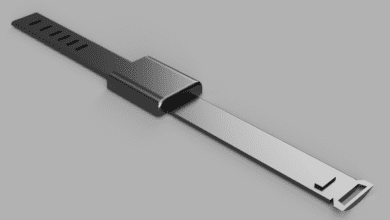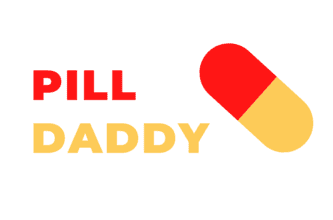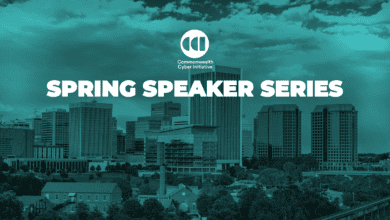
Bowling was one of the virtual activities that the game offered.
MegaHack is a 24-hour hackathon held at Virginia Commonwealth University (VCU). It is a sprint of intense innovation and problem-solving for developers and makers to meet challenges. As a sponsor of this year’s hackathon, CCI CVN’s areas of research appeared as challenge categories. The Smart Health and Smart Cities challenges drew many students’ efforts, with mentors from our Node there to consultat them throughout the event.
The “Best Overall Hack” award went to a team of students from VCU (Benjamin Estrada, Enes Kalinsazlioglu, Michael Martinez-Posadas, and Ryan Romero) for their project Give Me a Hand — a virtual reality simulation that helps people with phantom limb pain.
“It was one of the most fulfilling projects I’ve ever been a part of, not only because of the incredible team dynamics but also because of the impact we aimed to make by helping those in need,” says Benjamin.
What is phantom limb pain?
Phantom limb pain is a common and often debilitating condition experienced by people who have lost a limb. It feels like the missing limb is still there, and it can be accompanied by intense pain, burning, tingling, and other sensations.
How does Give Me a Hand help?
Give Me a Hand uses virtual reality to create a simulated limb that the user can see and control. This can help to trick the brain into thinking that the missing limb is still there, which can reduce pain and improve quality of life.
What are the features of Give Me a Hand?
- Gamified therapy: The simulation includes a variety of games and activities that the user can participate in, such as playing catch, shooting hoops, and painting. This makes the therapy more enjoyable and engaging, which can help to improve adherence.
- Customization: The user can customize the appearance of their simulated limb to match their own missing limb. This can help to make the experience more realistic and immersive.
- Biofeedback: The simulation can be used with biofeedback sensors to track the user’s progress. This can help the user chart how the therapy is working and make adjustments as needed.
“This gamified approach to physical therapy using virtual reality was a clever approach of using technology as an update to the traditional ‘mirror therapy’ used in some cases of treating phantom limb pain. This was a great example of taking a simple concept, and giving it an update, without losing the original idea that made it work. This is a key concept for telehealth, a booming market that J.P.Morgan estimated was worth $83.5 billion in 2022, that occasionally struggles to keep technology accessible, usable, and practical for remote patient care,” says Lauren Linkous – a Ph.D. candidate, mentor at Megahack, and a principal figure in our MDS lab.
What is the future of Give Me a Hand?
The Give Me a Hand team is continuing to work on improving the simulation. They also hope to conduct larger studies to confirm the effectiveness of the therapy.
If you would like to learn more about Give Me a Hand, you can visit the team’s website or read their article on Devpost.


